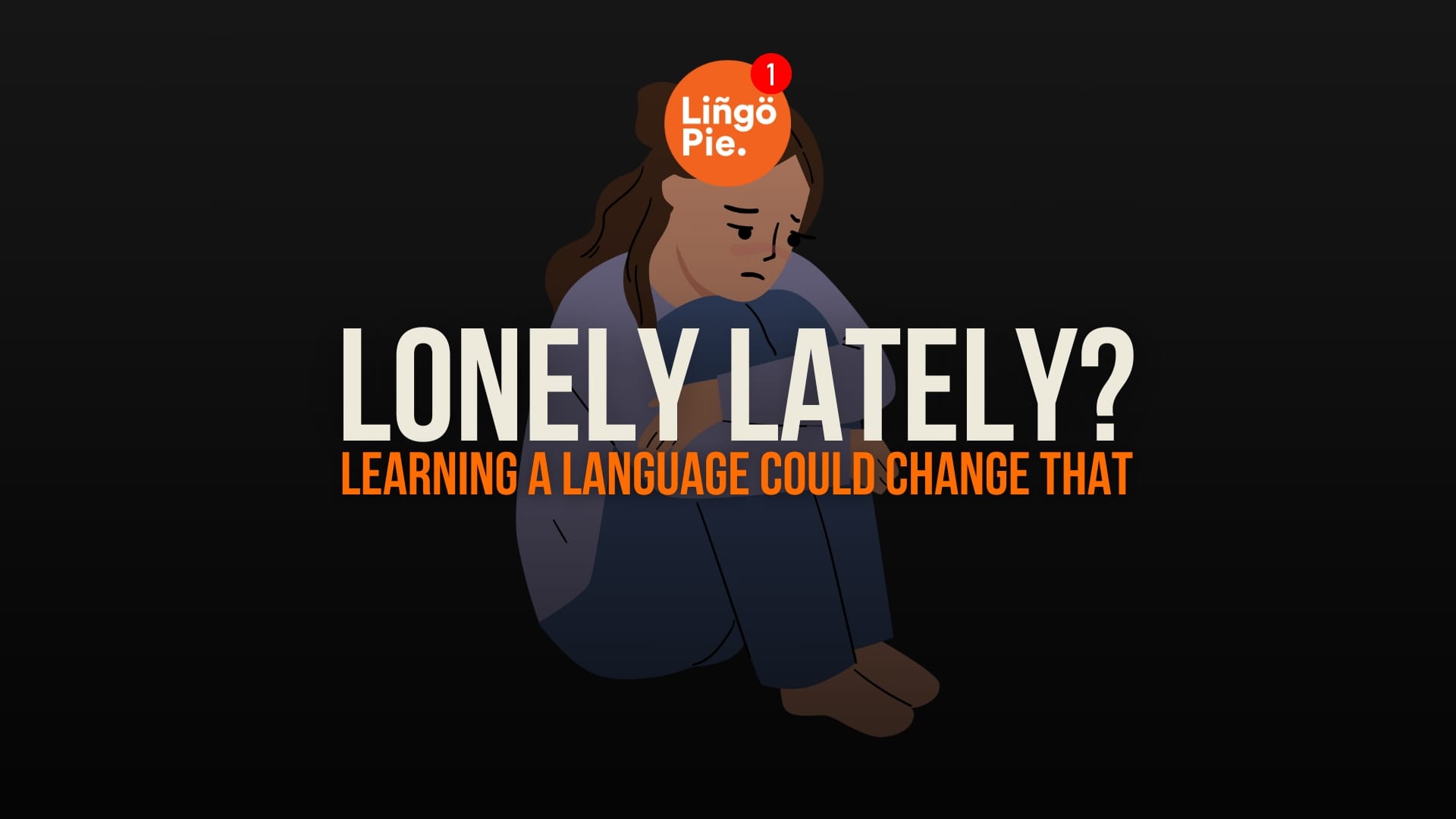We all mess up sometimes. Maybe you bumped into someone, needed to get their attention, interrupted a conversation, or genuinely apologized for a mistake. It’s one of those basic social interactions that keep daily life running smoothly, and Italian is no different.
In this post, I’ll walk you through the most natural ways to say sorry in Italian, from quick “excuse me” phrases to heartfelt apologies. You’ll learn when to use each variation, how to respond gracefully when someone apologizes to you, and even how to politely ask for permission or get someone’s attention.
By the end, I promise you’ll sound more like a considerate local and less like a tourist stumbling through basic phrases. Let’s begin!
- How Many Italian-Speaking Countries Are Out There? [2025 Data]
- 60+ Surprising Italian Words Used In English
- 20+ Easy Italian Short Stories To Learn The Language

How To Say Sorry In Italian
The most common and versatile way to say sorry in Italian is "mi dispiace" (mee dee-SPYAH-cheh), which literally translates to "it displeases me." This phrase works in both formal and informal situations and expresses genuine regret or empathy. You can also use the shortened version "mi spiace" in casual conversations.
When to use "mi dispiace":
- Expressing genuine regret: "Mi dispiace, non posso venire stasera" (I'm sorry, I can't come tonight)
- Showing empathy: "Mi dispiace per la tua perdita" (I'm sorry for your loss)
- Apologizing for mistakes: "Mi dispiace, ho dimenticato il tuo compleanno" (I'm sorry, I forgot your birthday)
- Acknowledging delays or inconveniences: "Mi dispiace per il ritardo" (I'm sorry for the delay)
The grammar here is interesting because "dispiacere" is an impersonal verb, like "piacere." The structure is "mi" (to me) + "dispiace" (it displeases), so you're literally saying "it causes me displeasure" rather than "I am sorry." This makes the apology feel more heartfelt because you're expressing how the situation affects you emotionally.
Variations For Saying Sorry In Italian
Scusa
"Scusa" (SKOO-zah) is your go-to word for casual apologies and getting someone's attention in everyday Italian. It comes from the verb "scusare" (to excuse) and works like saying "sorry" or "excuse me" to friends, family, or anyone you're on informal terms with.
When to use "scusa":
- Quick apologies: "Scusa, sono in ritardo" (Sorry, I'm late)
- Getting attention: "Scusa, puoi ripetere?" (Excuse me, can you repeat?)
- Minor interruptions: "Scusa se ti disturbo" (Sorry if I'm bothering you)
- Needing to leave: "Scusa ma devo andare" (Sorry, I have to go)
Since Italian changes based on who you're talking to and how many people, "scusa" has different forms depending on the situation:
- Scusi (formal): Use with strangers, older people, or in professional settings
- Scusate (plural): When apologizing to a group of people
- Scusami (more personal): Literally "forgive me" for closer relationships
Perdonami
"Perdonami" (per-DOH-nah-mee) means "forgive me" and represents the strongest, most heartfelt way to apologize in Italian. It comes from the verb "perdonare" (to forgive) combined with "mi" (me), creating a direct plea for forgiveness.
When to use "perdonami":
- Serious wrongdoing: "Perdonami se ti ho fatto soffrire" (Forgive me if I hurt you)
- Heartfelt remorse: "Ti prego, perdonami per quello che ho fatto" (Please forgive me for what I did)
- Unintended offense: "Perdonami, non volevo offendere nessuno" (Forgive me, I didn't mean to offend anyone)
- Formal interruptions: "Perdonami l'interruzione, ma devo dire qualcosa" (Forgive the interruption, but I have to say something)
For formal situations, you'd say "mi perdoni" (forgive me, formal), and for groups, "perdonatemi" (forgive me, plural). The emotional weight of "perdonami" is much heavier than "scusa" or even "mi dispiace."
È colpa mia
"È colpa mia" (eh KOHL-pah MEE-ah) means "it's my fault" and is the straightforward way to take responsibility for something that went wrong. The phrase breaks down as "è" (it is) + "colpa" (fault/blame) + "mia" (my), literally meaning "the fault is mine."
When to use "è colpa mia":
- Taking responsibility: "È colpa mia se siamo arrivati tardi" (It's my fault that we arrived late)
- Reassuring someone: "Non preoccuparti, è colpa mia" (Don't worry, it's my fault)
- Accepting blame: "Se qualcosa va storto, è colpa mia" (If something goes wrong, it's my fault)
- Combined with apologies: "Scusa, è colpa mia che ho dimenticato l'appuntamento" (Sorry, it's my fault that I forgot the appointment)
This phrase works in both formal and informal settings and has the same tone as saying "my bad" or "I'm at fault" in English. It's a clear, direct way to acknowledge responsibility without making excuses
Errore mio
"Errore mio" (eh-ROH-reh MEE-oh) means "my mistake" or "my error" and is the casual, quick way to admit you messed up. It's made up of "errore" (mistake/error) + "mio" (my), with the possessive adjective placed after the noun for emphasis.
When to use "errore mio":
- Quick admissions: "Errore mio, ho sbagliato il numero" (My mistake, I dialed the wrong number)
- Casual apologies: "Scusa, errore mio!" (Sorry, my mistake!)
- Minor mess-ups: "È stato un errore mio non leggere bene le istruzioni" (It was my mistake not to read the instructions carefully)
While "è colpa mia" implies taking full responsibility for something serious, "errore mio" is perfect for everyday slip-ups, wrong turns, miscommunications, or small mistakes that don't require a heavy apology.
Sono mortificato/a
"Sono mortificato" (SO-no mor-tee-fee-KAH-to) for men or "Sono mortificata" (SO-no mor-tee-fee-KAH-ta) for women means "I am mortified" and expresses deep embarrassment, shame, or profound regret. This comes from "sono" (I am) + "mortificato/a" (mortified), using the past participle of "mortificare" as an adjective. This is a formal, serious way to apologize when you feel genuinely humiliated or deeply sorry about something significant.
When to use "sono mortificato/a":
- Serious social mistakes: "Sono mortificato per averti offeso" (I am mortified for having offended you)
- Professional embarrassment: "Sono davvero mortificato per l'errore commesso" (I am truly mortified for the mistake I made)
- Personal shame: "Mi sento mortificata per il mio comportamento" (I feel mortified for my behavior)
- Public humiliation: "Rimasi mortificato di fronte a tutta quell'attesa" (I was mortified in front of all that waiting)
This phrase carries much more emotional weight than casual apologies like "scusa" or even "mi dispiace." It implies you're not just sorry but actually emotionally affected, embarrassed, or hurt by what happened.
Voglia scusarmi
"Voglia scusarmi" (VOH-lyah skoo-ZAHR-mee) is a very formal, old-fashioned way to say "please excuse me" or "I apologize." It combines "voglia" (the subjunctive form of "volere," used here as a polite "please") with "scusarmi" (excuse me), literally meaning "may you please excuse me."
When to use "voglia scusarmi":
- Formal interruptions: "Voglia scusarmi, ma devo andare" (Please excuse me, but I have to go)
- Professional apologies: Written correspondence or formal meetings
- Respectful situations: When addressing someone of high status or in ceremonial contexts
- Old-fashioned politeness: When you want to sound particularly refined or deferential
In modern Italian, this phrase is quite rare in daily conversation. "Voglia scusarmi" is reserved for very specific formal contexts where you need to show extra respect or follow traditional etiquette, like formal business correspondence, official speeches, or addressing dignitaries.
Non accadrà più
"Non accadrà più" (non ah-kah-DRAH pew) means "it won't happen again" or "this won't happen anymore." It's built from "non" (not) + "accadrà" (will happen, future tense of "accadere") + "più" (anymore/any longer).
When to use "non accadrà più":
- Making promises: "Non accadrà più, te lo prometto" (It won't happen again, I promise you)
- After apologies: "Mi dispiace per l'errore; non accadrà più" (I'm sorry for the mistake; it won't happen again)
- Offering reassurance: "Non preoccuparti, non accadrà più" (Don't worry, it won't happen again)
- Professional contexts: When you need to commit to improvement after an error
This phrase works equally well in formal and informal situations. It shows accountability and forward-thinking responsibility, making it perfect for workplace apologies, relationship discussions, or any time you need to demonstrate that you're committed to change.
Non l’ho fatto apposta
"Non l'ho fatto apposta" (non LOH faht-toh ah-POH-stah) means "I didn't do it on purpose" or "I didn't mean to do it." The phrase breaks down as "non" (not) + "l'ho" (contraction of "lo ho," meaning "I have it") + "fatto" (done, past participle of "fare") + "apposta" (on purpose/intentionally).
When to use "non l'ho fatto apposta":
- Accidental bumps: "Ti ho urtato, ma non l'ho fatto apposta!" (I bumped into you, but I didn't mean to!)
- Quick apologies: "Scusa, non l'ho fatto apposta!" (Sorry, I didn't do it on purpose!)
- Explaining mistakes: "Non l'ho fatto apposta, è stato un errore" (I didn't do it on purpose; it was a mistake)
- Defensive clarification: When someone thinks you did something intentionally but it was an accident
This phrase is perfect for those moments when you spill something, bump into someone, break something, or make any kind of mistake that might look intentional but wasn't. It's casual and commonly used in everyday situations to quickly clarify that you're not clumsy or inconsiderate on purpose.
How To Respond To “I’m Sorry” In Italian
When someone apologizes to you in Italian, knowing how to respond gracefully shows you understand the social flow of the language. Your response can range from casual "no worries" to more formal acceptance, depending on who's apologizing and the situation.
| Response Phrase | Meaning | Context |
|---|---|---|
| Non fa niente | It doesn’t matter | Informal/formal; general |
| Figurati | Don’t mention it | Informal, friends/family |
| Si figuri | Don’t mention it | Formal, polite |
| Nessun problema | No problem | Polite, general |
| Va bene | It’s okay | Casual acknowledgment |
| Non c’è di che | You’re welcome/No worries | Polite, common |
| Tutto a posto | Everything’s okay | Casual, reassuring |
Example exchanges:
- "Mi dispiace per il ritardo" (Sorry for being late) → "Non fa niente, non preoccuparti" (No problem, don't worry)
- "Scusa per l'errore" (Sorry for the mistake) → "Figurati, succede" (Don't mention it, it happens)
The most important thing is to sound warm and reassuring. Italians often pair these responses with a smile, gesture, or even a light touch on the arm to show genuine acceptance of the apology.
How To Ask For Permission In Italian
Beyond apologizing, you’ll often need to ask for permission in Italian daily life. The permission phrases I rounded up below often go hand in hand with apologies, since you might need to interrupt someone or disturb them to make your request.
| Phrase | Meaning | Context/Notes |
|---|---|---|
| Permesso? | May I? / Excuse me (to pass) | Informal/formal, physical permission |
| Posso...? | May I...? | Common, informal/formal |
| Potrei...? | Could I...? | More polite/formal |
| È permesso...? | Is it allowed...? | Formal |
| Mi è permesso...? | Am I allowed...? | Formal |
Using these phrases, along with polite tone and per favore (please), will help respectfully ask for permission in both everyday and formal Italian contexts.
Learn Italian With Lingopie
Now you've got the essential toolkit for apologizing and asking permission in Italian. These phrases will help you navigate everything from bumping into someone on the street to making formal requests at work. The key is matching your choice to the situation and the person you’re talking to.
Ready to hear these phrases in real conversations? Lingopie lets you watch authentic Italian content with interactive subtitles, so you can see precisely how natives use these expressions in context. There’s nothing quite like learning from actual Italian shows and movies to pick up the natural rhythm and cultural nuances that make all the difference.
So what are you waiting for? Click below to unlock a FREE 7-day trial!






![Happy New Year In Italian: 5+ Best Italian Greetings [Guide]](/blog/content/images/size/w300/2024/12/Happy-New-Year-In-Italian.jpg)


